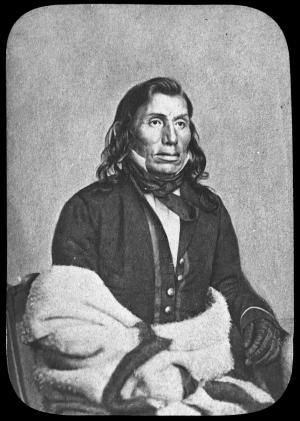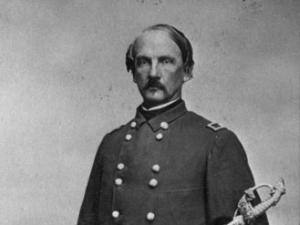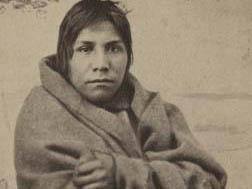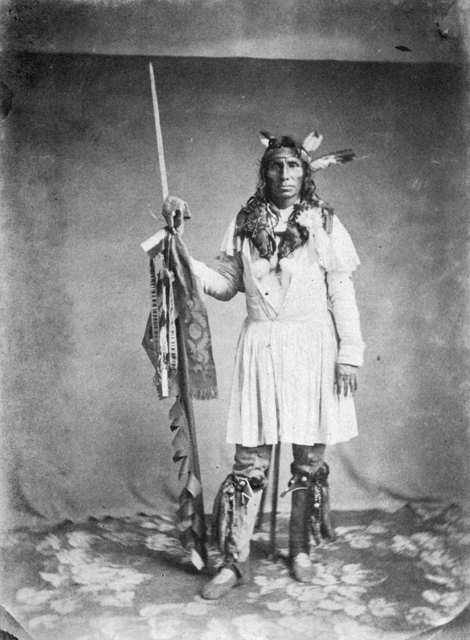 "We have waited a long time. The money is ours, but we cannot get it. We have no food, but here are these stores, filled with food. We ask that you, the agent, make some arrangement by which we can get food from the stores, or else we may take our own way to keep ourselves from starving. When men are hungry they help themselves"
"We have waited a long time. The money is ours, but we cannot get it. We have no food, but here are these stores, filled with food. We ask that you, the agent, make some arrangement by which we can get food from the stores, or else we may take our own way to keep ourselves from starving. When men are hungry they help themselves"
Taoyateduta, 1862
Taoyateduta (which translates as "His Scarlet Nation," though he was more often known as Little Crow, after his father) was born into the Mdewakanton village of Kaposia about 1810. He succeeded his father as leader in 1846. During the 1850s, he was widely recognized as a spokesperson for all the Lower bands of Dakota. He was a negotiator and signer of the Treaty of Mendota in 1851 and the Treaty of 1858. By the 1860s, Little Crow had adopted some European customs — he owned some European-styled clothing, for example, and he lived in a wood-frame house. But like most Dakota farmers on the Lower reservation, he staunchly refused to compromise his Dakota religious beliefs.
Little Crow tried to use his knowledge of white culture to guide the course of the war. On August 19, with hundreds of settlers already dead in Brown and Renville counties, and with attacks on white settlements continuing, he is reported to have said, "
Soldiers and young men, you ought not to kill women and children. . . . You should have killed only those who have been robbing us so long. Hereafter make war after the manner of white men."
On September 7, 1862 — three weeks into the fighting — Little Crow sent a letter to Henry Sibley pinpointing the reasons Lower soldiers went to war. Little Crow’s letter condenses decades of frustration over misuse of government funds, late annuity payments, and poor relations between government officials and Dakota leaders into a few terse sentences.
"Dear Sir – For what reason we have commenced this war I will tell you. it is on account of Maj. Galbrait [sic] we made a treaty with the Government a big for what little we do get and then cant get it till our children was dieing with hunger – it is with the traders that commence Mr A[ndrew] J Myrick told the Indians that they would eat grass or their own dung. Then Mr [William] Forbes told the lower Sioux that [they] were not men [,] then [Louis] Robert he was working with his friends how to defraud us of our money, if the young braves have push the white men I have done this myself."
Letter to Col. Sibley, Sept. 12, 1862:
"Red Iron Village or Mazawakan
To Hon H. H. Sibley
We have in Mdewakanton band one hundred & fifty five prisoners. not including the Sisiton [sic] & Warpeton [sic] prisoners. then we are waiting for the Sisiton what we are going to do with the prisoners they are coming down. they are at Lake qui Parl now. the words that I have sent to the governed I want to here [sic.] from him also. and I want to know from you as a friend what way that I can make peace for my people. in regard to prisoners they fair [sic.] with our children or our self just as well as us
your truly friend
Little Crow
per Scott Campbell"
After the Battle of Wood Lake, he left Minnesota and attempted to gather support for a continued war in the west and Canada. He was killed on July 3, 1863 after returning to Minnesota. For many years some of his remains were put on display by the Minnesota Historical Society before being returned to his descendants for burial.




